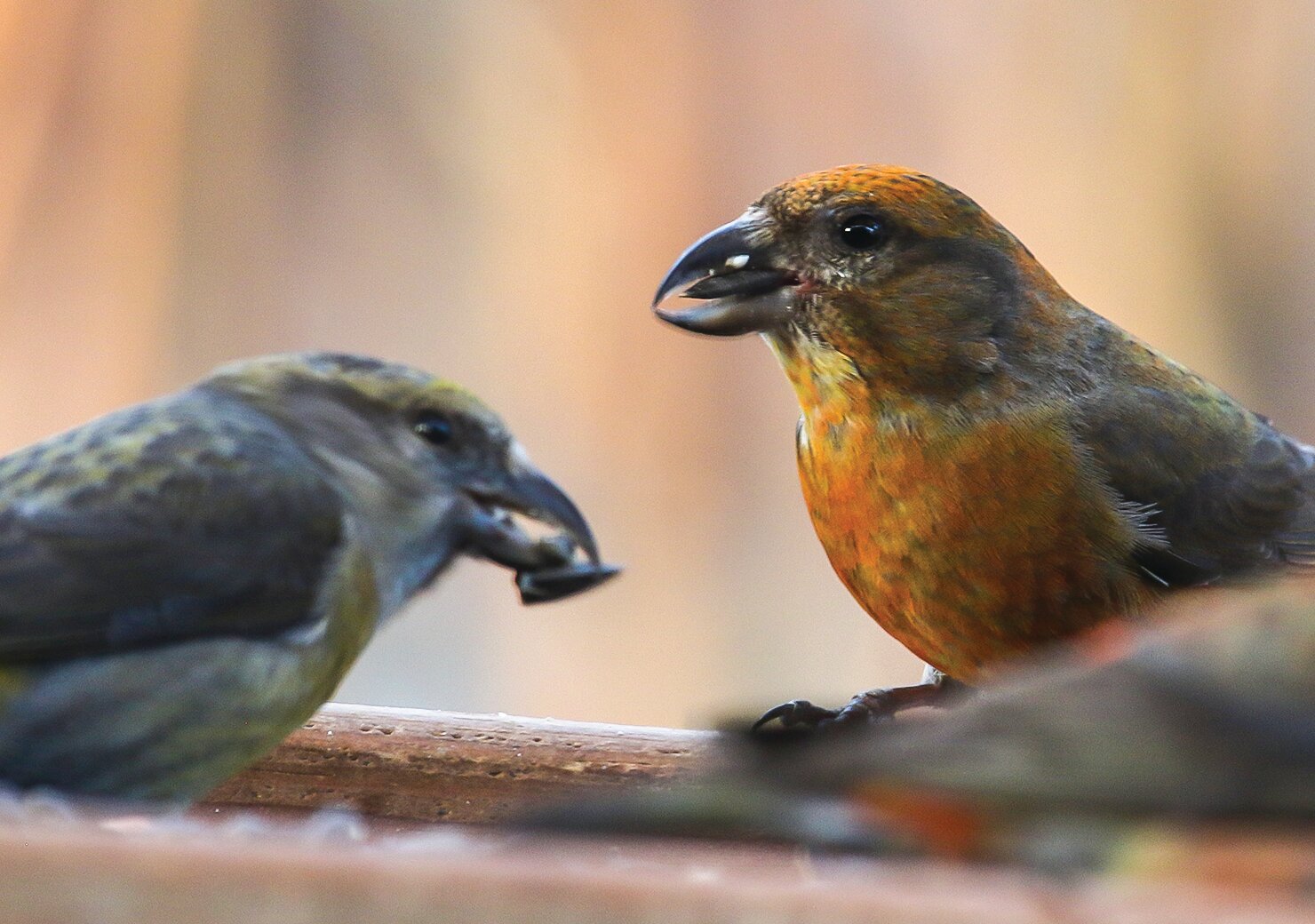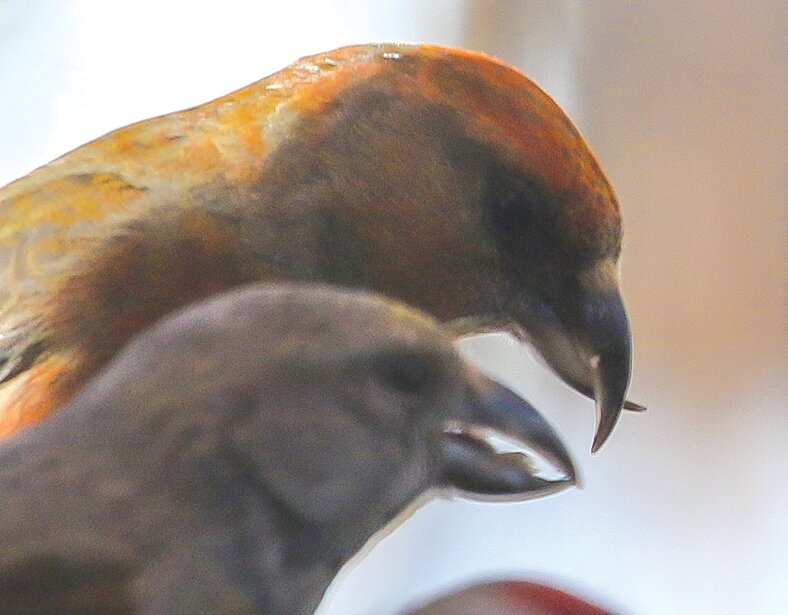Support the Timberjay by making a donation.
Crossbills come and go
These conifer specialists are the ultimate forest nomads
I’d been jealous most of the winter as I regularly heard reports of red crossbills at area feeders. Everyone seemed to have a visit from these colorful finches. Even the old, beat-up feeder at …
This item is available in full to subscribers.
Attention subscribers
To continue reading, you will need to either log in to your subscriber account, below, or purchase a new subscription.
Please log in to continue |
Crossbills come and go
These conifer specialists are the ultimate forest nomads
I’d been jealous most of the winter as I regularly heard reports of red crossbills at area feeders. Everyone seemed to have a visit from these colorful finches. Even the old, beat-up feeder at my father’s house right in Tower had a regular stream of crossbills for the past couple months. And yet, the deluxe feeding station at my house on the edge of the Lost Lake Swamp seemed totally ignored.
That is until late last week when a flock of eight of them, both males and females, dropped out of the sky to crunch sunflower seeds with my diminishing flock of redpolls. They ate for several minutes, while I grabbed my camera and started shooting. Then, just as suddenly as they arrived, they took off and, in true crossbill fashion, I haven’t seen them since.
Crossbills are nomads by nature, in part due to their unusual dependence on conifer seeds. Their crossed bills are a unique adaptation that gives them an advantage over other finches by allowing them to wrest open the scales of pine and spruce cones, which allows them to pull out the seeds using their thick, muscular tongues (which remind me of parrots).
While many birds have favored foods, most can turn to other options when their main fare is in short supply. But crossbills are specialists, which means they follow their food supply. And cone crops vary from year-to-year, so crossbills are often on the wing, looking for areas where the cones are abundant.
It’s not clear why crossbills showed up this year at so many area feeders. Most years, they don’t seem to bother with feeders, preferring to spend their time breaking open pine and spruce cones instead. Here in the North Country, where conifers are abundant, crossbills are a year-round resident in our region, though the numbers fluctuate from year-to-year depending on the cone crop. We seem to have lots of them around this winter, although I’ve only seen red crossbills this winter. The other common species is the white-winged crossbill, which is easily distinguished by their white wing bars and generally more pinkish coloring. Red crossbills tend to be more of a brick red.
Because crossbills are so dependent on conifer seeds, they can nest and raise young at any time of year. Birds generally raise their young when their food supply is most abundant, which is why insect-eating birds arrive by the millions in the North Country each year to raise their young on the hordes of nutritious insects that seem to explode in our woods right around Memorial Day each year.
But the best time for raising young if you’re a crossbill is whenever you find a jackpot of cones, and that can happen any time of year, but most often in the fall or winter, after the previous summer’s new cones are dried and mature. While most birds feed insects to their young, crossbills feed their young pine and spruce seeds, so as long as there is a sufficient cone crop, crossbills will get down to business at any time of year.
All of which only adds to their unpredictability, even occasional fickleness. I still remember one winter, back in the 1970s, when crossbills became regular visitors to the bird feeders I maintained at our family’s home in Bloomington. The birds came like clockwork for weeks and one day I posted their presence to the rare bird alert maintained by the Minnesota Ornithologists Union. At least one excited bird watcher called and made an appointment to come for coffee the following morning to see them. He showed up, binoculars and camera in hand, but the crossbills were no-shows, and they never appeared at our feeders there again. That’s just like a crossbill.









